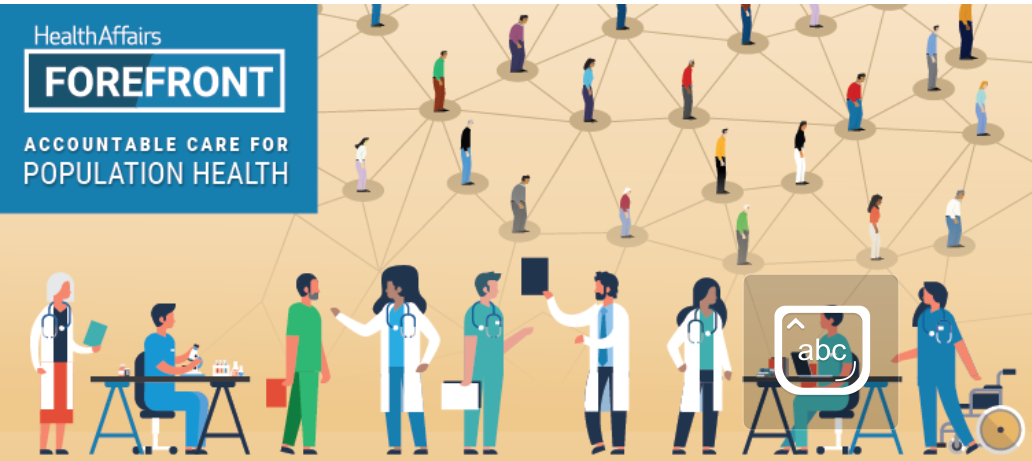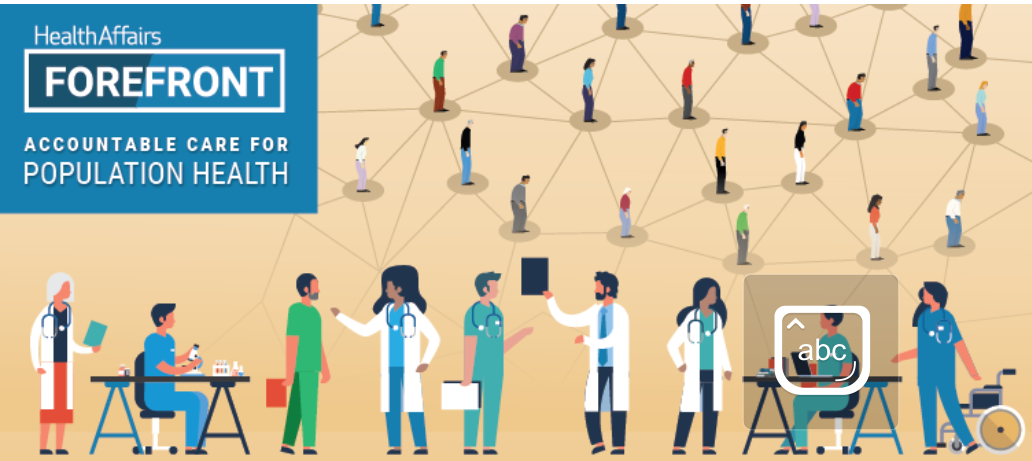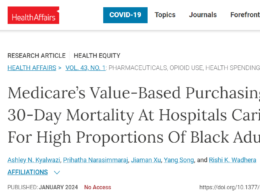the health strategist
institute for health strategy and digital health
Joaquim Cardoso MSc
Chief Researcher, Editor and Strategy Officer (CRSO)
April 30, 2023
ONE PAGE SUMMARY
This article discusses the potential link between alternative payment models and provider consolidation in the US healthcare industry.
- While both trends have become prominent in the past decade, the evidence linking them is limited.
- Alternative payment models, which encourage coordinated care, have been expected to promote provider consolidation by bringing hospital and physician practices under the same management.
- However, only two previous studies have looked at the association between alternative payment models and provider consolidation, finding a weak relationship.
The author’s own study looked at episode payment models and found no impacts on measures of consolidation.
The author suggests that researchers should build the evidence base on this topic, and policy makers should consider designing models in ways to reduce incentives for consolidation.
DEEP DIVE

Have Alternative Payment Models Led To Provider Consolidation?
Health Affairs
Fang He
April 28, 2023
Editor’s Note
This article is the latest in the Health Affairs Forefront series, Accountable Care for Population Health, featuring analysis and discussion of how to understand, design, support, and measure patient-centered, cost-efficient care under the umbrella of accountable care. Additional articles will be published throughout 2023.
Readers are encouraged to review the Call for Submissions for this series. We are grateful to Arnold Ventures for their support of this work.
Two trends have transformed the health care industry in the past decade: the rise of alternative payment models and the rapid consolidation of health care providers.
First, Medicare and other payers have launched a wave of experiments changing the way health care providers are paid.
More than 40 million people and 314,000 providers and health plans are in alternative payment models run by Medicare’s Innovation Center, and around 11 million people and 580,000 providers participate in Medicare’s Shared Savings Program accountable care organizations (ACOs).
Beyond Medicare, 40 percent of all US health care payments flowed through alternative payment models in 2021, up from 23 percent in 2015.
This wave of experiments shows no signs of ebbing.
In 2021, Medicare announced a goal for all 80 million Medicare beneficiaries be in a relationship with a provider in an ACO, advanced primary care model, or Medicare Advantage by 2030. New episode payment models are being planned as well.
Second, health care providers have gotten increasingly large.
Hospitals have merged with each other, leading to “super-concentrated” hospital markets.
Physician practices have combined to form larger group practices, leading to more concentrated markets for physician services.
Hospital and health systems have snapped up physician practices, dramatically increasing the percent of practices being owned by a hospital or health system.
Even organizations that do not traditionally provide health care, such as technology, retail, and insurance giants, are aggressively acquiring physician practices.
The epitome of this consolidation activity is the proliferation of megaproviders such as Mass General Brigham in Massachusetts, University of Pittsburgh Medical Center in Pennsylvania, and Sutter Health in California.
In 2022, these three megaproviders brought in almost $60 billion in revenue, comparable to large corporations such as Kraft Heinz, Nordstrom, and Rolls-Royce.
Consolidation reduces competition for health care services, which increases providers’ leverage when negotiating with commercial insurers, enabling them to charge the insurers higher prices, which are then passed on to patients.

I show below that there is limited evidence linking alternative payment models and provider consolidation.
Providers can succeed at these models without consolidating.
Going forward, researchers should build the evidence base on this topic, and policy makers should consider designing models in ways to reduce incentives for consolidation.
Are These Trends Linked?
After the Affordable Care Act passed in 2010, many observers predicted that the trends between alternative payment models and provider consolidation would be linked.
They were concerned that the alternative payment models that followed from the law would trigger a frenzy of consolidation activity, stifling competition between providers.
Alternative payment models encourage a model of care that involves providers speaking to each other, coming up with the best plan for the patient.
In ACO models, the primary care physician acts as a coordinator, passing the patient to specialists or other care settings as needs arise.
In episode payment models, the hospital is responsible for coordinating with the patient’s specialist team and postacute care providers.
This integrated care would be best provided by a health system.
The health system would gather the hospital, primary care physician, and specialists under the same management and using the same electronic health record system.
Or so the thinking went.
In addition, compared to the traditional fee-for-service system in which providers are guaranteed revenue when performing a service, alternative payment models introduce uncertainty and push providers to take on more risk.
If a provider fails to control costs or maintain quality of care, they can be on the hook for large losses. Larger providers tend to be able to bear more of this risk.
In ACO models, the primary care physician acts as a coordinator, passing the patient to specialists or other care settings as needs arise.

Has The Evidence Borne Out These Concerns?
Unfortunately, the amount of evidence linking the trends is thin.
Only two previous studies, by Hannah Neprash and colleagues (2017) and Genevieve Kanter and colleagues (2019), have looked at the association between ACOs and provider consolidation.
In addition, my new study, Fang He (2023), looked at episode payment models. Neprash and colleagues assess the association between ACOs and a large set of measures on provider consolidation.
These include the integration between physicians and hospitals, the concentration of the markets for physician and hospital services and health insurance, prices for inpatient and outpatient services, and the size of physician groups.
They only find an association between ACOs and larger physician groups and conclude that the relationship between ACOs and provider consolidation is weak.
Kanter and colleagues focus on the relationship between ACOs and practice size.
They also find that ACOs are associated with larger practices.
However, both studies were unable to establish causation. It is unclear whether larger practices would enable formation of ACOs or whether ACOs led to larger practices.
My research assesses the impact of the Comprehensive Care for Joint Replacement (CJR) model, a Medicare model focused on lower extremity joint replacement, on provider consolidation.
I used the CJR model’s random assignment of hospitals to the model to identify the model’s causal effects.
I did not find any impacts of the CJR model on measures of consolidation. However, my results are only suggestive.
Small sample sizes led to imprecise estimates on the impact of the CJR model.
This limitation precluded more definitive conclusions on the lack of a relationship between the CJR model and provider consolidation.

Why Is There No Clear Linkage Between Alternative Payment Models And Consolidation?
Neprash and colleagues and my study offer some potential explanations.
Neprash and colleagues argue that providers need not consolidate beyond some modest level to operate under an alternative payment model.
In addition, providers can influence patients’ use of care in multiple settings without formal ownership arrangements.
For example, my study posits that hospitals did not need to acquire orthopedic surgeon practices to reduce the use of institutional postacute care in response to the CJR model.
To the contrary, consolidation into entities under the same financial management may hurt their performance in alternative payment models.
Physician-led ACOs have been shown to reduce spending compared to hospital-led ACOs.
Hospital-led ACOs may be hesitant to cannibalize revenues from hospital services for the sake of performing better in ACO models.
Finally, there are already powerful forces pushing all providers to consolidate, independent of alternative payment models.
These include increased bargaining power in negotiating prices with commercial insurers, changes in Medicare payment policy, and pooling resources to implement expensive electronic health records systems or new services lines.
Showing any marginal impact from alternative payment models is difficult.

The Path Forward
Even as Medicare and other payers plow ahead on alternative payment models, the Federal Trade Commission is working hard to stop health care mergers and acquisitions.
While these models may lead to lower spending, more studies are needed to increase our confidence that these models do not unintentionally lead to provider consolidation.
Only three studies exist on this important question, all with some significant limitations.
In addition, they have only looked at ACO and episode payment models. None have looked at other types of models such as advanced primary care models.
Payers can also design models in ways that discourage consolidation.
Models that hold providers accountable for downstream spending may dissuade consolidation between these upstream and downstream providers.
For example, hospitals may not want to acquire postacute care providers if they intend to cut use of postacute care to achieve cost savings.
In addition, payers can encourage smaller, independent providers to participate by providing financial resources.
Otherwise, model participants tend to be larger and part of health systems.
Through more evidence and model design, we can avoid alternative payment models that have the potential to create more consolidated providers.
Otherwise, the modest savings from these models may be overshadowed by the price increases triggered by more consolidation. If this happens, we may all end up paying more for health care.

Author’s Note
Fang He works on contracts with the Centers for Medicare and Medicaid Services to implement and evaluate alternative payment models.
Originally published at https://www.healthaffairs.org












